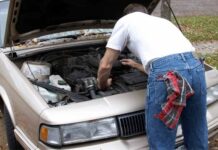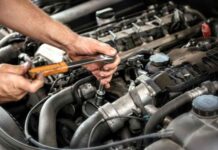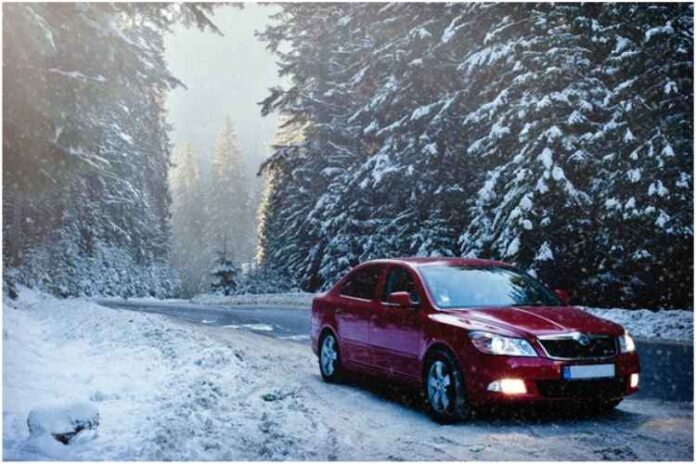There are a lot of misconceptions about how to handle a car in the cold of winter. For example, you’ve probably heard that it’s beneficial to turn on your car and idle for a few minutes, warming up the engine before you start driving in frigid temperatures.
You probably didn’t know that this is actually not good for your engine, at all. Shocking, right?
If the most widely believed winter vehicle protection tip isn’t trip, how can you protect your car in the winter? We’re here to tell you.
Read on for tons of tips that will help you to protect your car next winter.
Check on Your Oil
As a car owner, you already know how important it is to get an oil change once a year. If you’ve been putting it off for a few months, make sure that you get an oil change before the temperatures drop.
When the weather turns cold, the fluids in your car start to run a little slower. If your oil is low, old, or contaminated, you’re dealing with double the inefficiency. This puts a huge strain on your engine, which is already struggling in the winter.
Protect Your Battery
Contrary to popular belief, cold weather doesn’t do lasting damage to a car’s battery. What it can do, however, is cause your battery to run out of juice faster than normal. If you don’t want to get caught out in the snow, make sure that you’re doing what you can to protect your battery.
Always double-check that your lights are off when you turn off the car. Unplug any chargers you’ve got in there, too. The moment you start to notice the signs that your car battery has reached the end of its life, get a replacement.
Invest in an Air Pump
Have you ever noticed that your tires seem to flatten a bit when the temperature drops? That’s because cold temperatures can cause the air inside of your tires to compress, leading to low tire pressure. Why does this matter?
Some people believe that dropping the pressure in your tires a skosh makes it easier to drive on icy or salt-crusted roads. The truth is that low tire pressure leads to worsened vehicle handling, plus low efficiency and increased tire damage. Invest in an air pump that you can keep in the trunk of your car to maintain the proper pressure in all four tires throughout the winter season and beyond.
Get a Radiator Fluid Flush
This one might have you scratching your head. After all, isn’t radiator fluid antifreeze? Isn’t it designed to sustain, well, freezing temperatures?
Sort of. Radiator fluid is a combination of antifreeze and water, and that water content is more susceptible to freezing at higher temperatures than antifreeze. If your radiator fluid does freeze, even partially, it can do some costly damage to your radiator.
You can’t go without the water content in your radiator fluid, but you can head to the auto shop for a radiator fluid flush. Getting rid of old radiator fluid and replenishing your car with new radiator fluid reduces the risk of freezing.
Stop Parking on the Street
Winter in cold climates means one thing: road salt. Road salt is great because it helps to lower the risk of ice on roads and sidewalks. What’s not so great is the damage road salt can do to your car’s exterior–we’re talking corrosion, scratching, and all-around bad stuff.
If you park on the street and have alternative options, it’s time to get that car elsewhere. If you don’t have a garage, consider one of these custom-built (but budget-friendly) steel garages. Not only will they protect your car from road salt but they’ll also provide a decent amount of insulation, keeping your car and all of its components from getting too cold when not in use.
Get Winter Wiper Blades
Winter auto protection isn’t just about the car, itself. It’s also about the steps you take to ensure your safety while driving and the safety of others on the road. In the winter, that means paying extra attention to the issues that arise from low visibility.
Your typical wiper blades are meant to clear away rain, not sleet, snow, ice, or hail. Winter wiper blades are bigger and built to handle winter weather patterns. (Don’t forget that this is also the time to use cold weather-approved wiper fluid that doesn’t freeze when you’re trying to give your windshield a quick rinse.)
Defrost and Drive
Now, let’s talk about warming up the car, shall we? If you’re not supposed to idle while the engine warms up, what are you supposed to do? You’re supposed to start driving.
Your engine doesn’t really get warm until the car is in motion. That’s why sitting there isn’t doing much to help (while also doing some damage). The only problem with the get-in-and-drive method in the winter is the issue of defrosting, which can take a bit.
As soon as you turn on your car, hit the defroster and point the heating vents up at the windshield. If you’re driving an older car, you’re going to want to run the air conditioner for a few moments to combat the humidity. In a newer car, the air conditioner is probably set to turn on with the defroster.
Protect Your Car from Harsh Winter Weather
A lot of drivers aren’t quite sure how to protect their car when the harsh winter weather hits. A lot of them are, well, winging it and hoping for the best. Stop speculating about what you’re supposed to do and use this guide to take care of your car the right way.
Looking for more car talk? Take a look at our automotive section to learn more about the car you drive every single day.


























